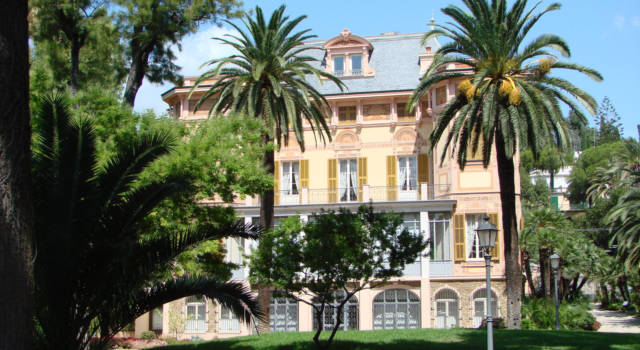In 1870, pharmacist Pietro Vacchieri bought a plot of land and built a palace, designed by Filippo Grossi.
The Villa had three floors (just the third floor was facing the garden) and a tower, covered in tiny stones, that’s why it was defined “crunchy”. The doors and the windows were richly decorated.
The Villa was considered weird, because of its eclectic style.
In 1874 Cavalier Lazzaro Patrone bought the completely furnished Villa, a small dependence in a garden full of exotic plants.
At his death the Villa was sold by his heirs to the Swedish scientist Alfred Nobel, in 1891.
The Villa was renovated by architect Pio Soli, who raised one more floor (decorated like the tower) and added lofts and a slate roof.
The indoor area is decorated with an exotic taste: wicker, bamboo, statues and Chinese vases.
For the outdoor, he was allowed to build an iron pier on the sea in order to make ballistic experiments. He also built a neoclassical pavilion with columns, where he put a statue of a “tuffolina”, a girl diving into the sea. In the park there was a shed for his assistants’ experiments, and also some rare plants, like banana trees and pineapples.
Alfred Nobel was born in Stockholm, in 1873, and he was a famous chemist, who discovered dynamite and other explosives.
Because of a fight with the French government, he chose Sanremo as his new home. Here, he lived until 1869, when he died.
After his death a new association was founded, and it still gives Nobel prizes every year.
In 1923 the Villa was sold to Giovan Battista Parodi, and his heirs gave it up to the public administration, that opened the Nobel museum.



